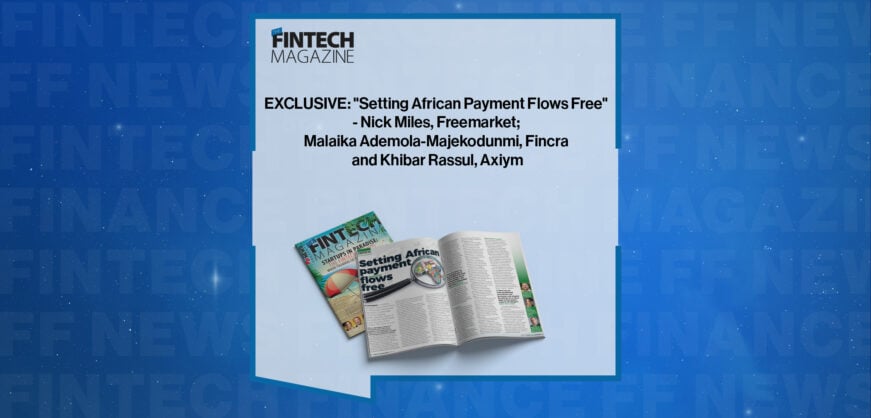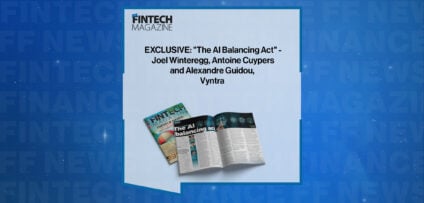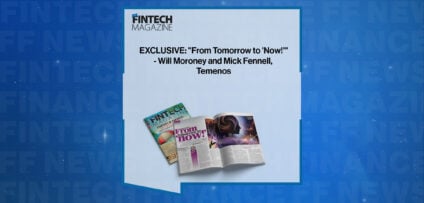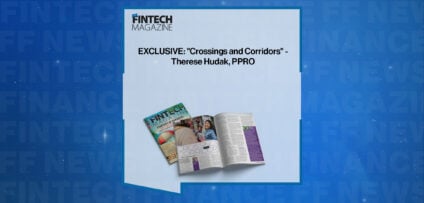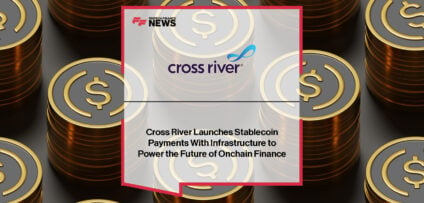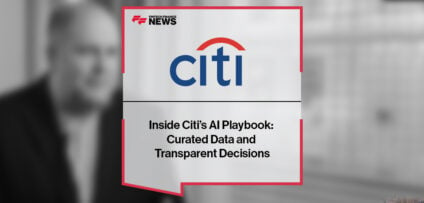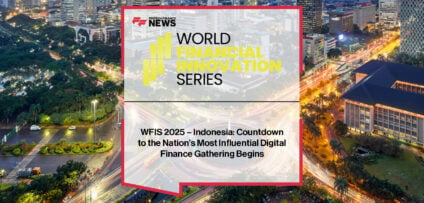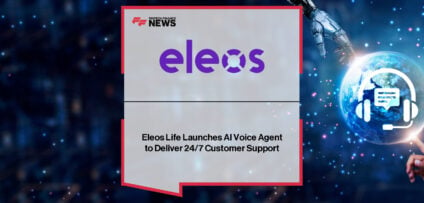Breaking News
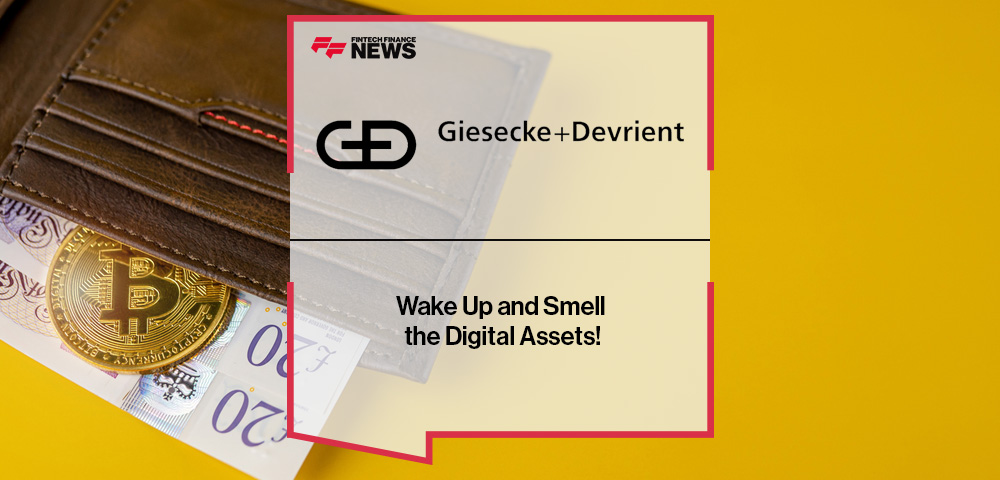
Wake Up and Smell the Digital Assets!
The role that financial institutions can play in the digital asset space and how digital assets can potentially open up a whole new world of opportunities for financial institutions was the subject of a lively discussion between Alex Gatiragas from Giesecke+Devrient (G+D), Teana Baker-Taylor of Crypto UK, and Deutsche Bank’s Sabih Behzad, hosted by FFNews. And it wasn’t all about buying coffee with your Bitcoin…
The concept of a ‘digital asset’ has been around since 1998, when computer scientist Nick Szabo floated the idea of a decentralised ‘Bit Gold’. Szabo (who says he’s definitely not the ‘mind’ behind Bitcoin) continues to work in the field of crypto and smart contracts (which he is happy to be credited with inventing), but the world is still only feeling its way towards the paradigm shift that his ‘Bit Gold’ hinted was to come.
For big financial institutions, founded on more than 700 years of analogue banking and 30 odd years of digital, it must be like moving towards an unknown destination with misty glasses and a map that’s only half drawn. No wonder these highly risk-averse, but highly influential institutions have been hesitant about adoption.
However, Alex Gatiragas, part of the digital solutions team at global security organization G+D, Teana Baker-Taylor, formerly with HSBC, now serving on the board of Crypto UK, the self-regulatory trade association for the UK cryptoasset industry, and Sabih Behzad, Head of Digital Assets & Currencies at Deutsche Bank, believe many are now fully on board with the revolution. So, we began by asking them how big is the potential for FIs who are involved?
“Whether you believe in crypto as an asset class or not, and I think the jury’s out in some quarters on that, the technology behind it is undeniably powerful. So the short answer to your question is there’s huge potential,” says Sabih Behzad from Deutsche Bank.
“The promise that digital assets offers is two-fold. Firstly, it’s about doing the stuff that banks broadly do today, but doing it faster and cheaper, in a more efficient way. Banking is a very expensive business, after all, so, doing business at a much better price point is compelling in itself.
But what I think will really drive things forward is the innovation that this technology will bring. Ultimately, we’ll be able to programme these smart assets with capabilities to offer new products and services that we can’t even envisage today.”
Teana Baker-Taylor from Crypto UK also acknowledges the efficiency and transparency of using the distributed ledger technology (DLT) on which digital assets are built. But she believes the benefits go even further – to de-risking the system in a number of ways.
“Tech-savvy customers may want to participate in blockchain projects in a certain way. Others may want to interact with the service in a similar way to how they interact with a card programme or a current savings account that they have with their bank now. So, being able to offer a broad range of services will be important”
“For example, if you’re using stablecoins as a payment mechanism and instrument to settle those transactions, and you’re able to do that on-chain significantly faster than in a T+2 or T+3 environment, that could, potentially, decouple the payments ecosystem from the credit ecosystem,” she says.
“We’re already seeing the technology used to create completely new business cases that weren’t able to be serviced in the same way previously, particularly around areas that are Web3-native and use open source infrastructure and architecture. Those types of tokens that are cryptographically secured and native to those environments will become incredibly important, whether you’re moving financial information or healthcare information – data of any kind, in fact. And that will be transformative.”
G+D works with commercial banks in supplying a lot of the technology around digital payments and Alex Gatiragas says that what was merely curiosity among its clients about DLT two years ago, is now definitely part of their strategy.
“They are wanting to offer digital assets, cryptocurrencies, etc, as an asset class – although maybe not immediately as a source of payment.”
Ah yes. The question of payments… that’s a tricky one.
“There has been some criticism from across the industry around the lack of use cases for digital assets. You’ll often hear parliamentarians or people in Congress say, ‘people aren’t buying cups of coffee with Bitcoin’,” says Baker-Taylor. (That’s factually incorrect: you can, although the coffee might be cold by the time the on-chain crypto transaction is confirmed and you can pay.) “But equally, we don’t have frameworks in place that enable companies like payment service providers that provide Shopify-type payment stacks, or for financial institutions, to integrate those types of payment services into what they’re offering. So there is a little bit of chicken and egg going on here.”
Crypto coffee might feature higher up the menu – in Europe at least – following the introduction of the Market and Crypto Assets Regulation this year which makes fiat-backed stable coins’ status as e-money crystal clear – i.e. they can only be issued by regulated electronic money institutions and credit institutions under the existing Electronic Money Directive.
“Digital and crypto assets being used for speculative purposes have been broadly outside of any type of regulatory perimeter. But payment use cases are clearly inside,” says Baker-Taylor. “Just like any other electronic money that we have today, they can be put into payment interfaces.
“Some of the timelag around use cases has a lot to do with the lack of regulatory clarity around how some of these assets might be used for settlement. But as those regulations start to become more clear, I think adoption for payment use cases will increase and banks and PSPs will be able to use those instruments in the way they were designed for.”
Once the regulatory fog lifts, G+D’s Gatiragas believes digital assets as a payment mechanism will see faster takeup – albeit initially among challenger bank customers.
“There are already established neobanks and fintechs looking to create a super app for their customer base. And using cryptocurrencies for certain things is part and parcel of that particular application,” he says.
Baker-Taylor warms to the theme of customer choice – and warns that history shows they will go elsewhere if legacy institutions fail to provide it.
“Looking at it from the end customer’s perspective, whether you’re a business or an individual, optionality is important,” she says. “Up until recently, large financial institutions were the only game in town and then fintech came along and addressed quite specific areas of finance, be that mortgages or digital-only current accounts. We’ve kind of gotten used to that idea now and, if consumers can’t get that optionality from their financial services institution, they’ll start shopping around and looking for other things.
“There are increasingly going to be ways that we transact with each other – entertainment, gaming or AI, for example – that don’t neatly connect at an infrastructure level to the existing financial ecosystem,” she continues. “So, if you have a digital asset that can perform those functions, then, obviously, people involved in those specific use cases are not going to want to have to move assets in and out of different environments to get that money into a game or continue to do whatever it is that they’re doing.
Those use cases today are small and quite bespoke. But, just as we didn’t necessarily know what we were going to do with our smartphones when we first got them and they now afford us a whole host of ways to exchange information, data, communicate, entertain, it’s the same with digital assets. It’s the technological ability it affords us to really leapfrog – into things not just being built on top of the internet, but things being built into the internet. Having the way we transact and engage with each other being at the speed of the internet will materially change a lot of things.”
Facilitating binge sessions of CryptoKitties might well play to a neobank’s agenda but it isn’t really what corporate banks are interested in.
Institutions like Deustche Bank are much more focussed on building use cases around big parcels of tokenised money movement and tokenised real-world assets, says Sabih Behzad.
“We, like a number of other institutions, bank very large corporates that have operations in a multitude of countries, and when they need to move their money it’s at scale. They don’t want to be restricted by cut-off times: London being open when Singapore’s closed, then New York doesn’t quite match up and everything’s shut at the weekend. If you’re trying to run a massive multinational corporate, you want to have your money in the location that yields the best return, until you need to deploy it in one of your operating countries. That’s something we hear very strongly. And that’s where potential blockchain solutions can help.
“If you’re trying to run a massive multinational corporate, you want to have your money in the location that yields the best return, until you need to deploy it in one of your operating countries. That’s something we hear very strongly. And that’s where potential blockchain solutions can help”
“The second area that we are focussed on is more around asset tokenisation. We’ve seen that there have been a lot of tokenised debt issuances, in particular corporate debt and sovereign debt. Recently, there was a nearly $800million debt issuance by way of the first government-issued tokenised green bond by the HMMA in Hong Kong. That was significant news. We haven’t seen a tokenised debt issuance of that scale up until now.
“There are also a lot of traditional assets where there’s an opportunity to use DLT and blockchain to make them essentially better and more efficient – emerging use cases around things like art and real estate, assets that tend to be fairly liquid, open to a very small investor base, and can have very large ticket sizes, which essentially make them trap equities. The fact that you could use blockchain technology to fractionalise and tokenize them and make them tradable, opens up a new investment class.”
The elephant in the room, which trumpeted its presence in 2022 with a series of collapses among major crypto-asset platforms, culminating spectacularly with FTX, which went down owing nearly two million customers and creditors an estimated $11billion, is trust in this new system of transacting value.
“Banks will have an active role to play in instilling trust,” says G+D’s Gatiragas. And that, in his opinion, can be fostered by banks building services around digital assets that customers are already familiar with from their fiat accounts. Take security where, on the chain, the issue of custody is paramount. The US crypto exchange failures highlighted how hot wallets (i.e. custodial wallets held on behalf of customers) and the assets they contained could be marooned when the platforms that secured them crashed and burned.
“The secure holding of keys for digital assets is pivotal in safeguarding these assets on a blockchain,” says Gatiragas. “For self-custody (i.e. cold storage) wallets, there is typically no support for regaining access to your digital assets if your keys are lost. This represents a paradigm shift for both the industry and consumers.
“In traditional finance, entities such as banks can assist in resetting accounts and passwords. The most common method to restore access to digital asset keys for a cold storage wallet is to utilise the industry standard BIP/38/39.
This involves recording (physically writing down) 12 or 24 words that serve as a ‘secret’ to recover your keys later on. However, there is a challenge with BIP/38/39: if this word list is lost or compromised, access to your digital assets is at great risk. Unfortunately, there have been many instances where word lists were lost, rendering recovery impossible, or where the word list was compromised (e.g. copied or stolen), leading to theft of digital assets.
“G+D is working on solutions that conform to industry standards. However, we believe that for trust and mass adoption, a failsafe mechanism must be provided. Trusted entities such as banks and fintech companies should be able to support their customers if they lose access to their keys.
“By implementing distributed recovery mechanisms, consumers can be protected from lost cold storage devices and keys. Just as a consumer would contact their financial services provider if they lost a payment card, G+D envisions a world where the same would occur for digital asset cold storage devices.
“If you’re using stablecoins as a payment mechanism and instrument to settle those transactions, and you’re able to do that on-chain significantly faster than in a T+2 or T+3 environment, that could, potentially, decouple the payments ecosystem from the credit ecosystem”
This familiar ‘card-like experience’ is what G+D believes will drive the next wave of consumer adoption in the world of blockchains and digital assets.”
And then there is the way customers interact with the digital asset product itself.
“It comes back to choice,” says Gatiragas. “Tech-savvy customers may want to participate in blockchain projects in a certain way. Others may want to interact with the service in a similar way to how they interact with a card programme or a current savings account that they have with their bank now. So, being able to offer a broad range of services, I think, will be important, and the technology behind it will support that particular use case. For example, the crypto-curious as opposed to the crypto-native customer might prefer to entrust recovery mechanisms to their bank.”
If all that’s a mindwarp for some retail customers of the banks, then, rest assured, bankers themselves are still getting their heads around it.
“That whole custody play is a paradigm shift because no one actually holds the data, it’s distributed, it sits on the blockchain,” says Gatiragas. “And what you hold are the keys or the credentials, if you like, to access that data on the blockchain. Traditional bankers find that a bit hard to imagine, because they’re so used to having a ledger stored in their banking system and being able to help their customers if they’ve forgotten their password.”
He adds: “We have spoken to certain banks that say, look, we’re not quite ready for this technology. We don’t have the skill sets. We don’t have the internal systems and processes for it. So, they’re looking for turnkey solutions and we are definitely going out to the market and supporting banks that have that need. But, at the same time, we are flexible enough to modularise the solution, and provide maybe a cold storage device and the necessary software components, where they provide other parts of the system, such as connectivity to the blockchains and associated services.”
So, in navigating the unfamiliar terrain of digital assets, what should FIs consider?
“There is activity being conducted today on-chain in a tokenised format, which mirrors and reflects the same types of activity that happen in the traditional banking ecosystem and which is already regulated – anything related to securities, for example,” says Crypto UK’s Baker-Tayler.
“The fact that you’re now doing this activity, whether it is the trading or settlement, with a tokenised instrument shouldn’t necessarily demand that we need new regulatory regimes. If it’s a security, it’s a security and we know how to treat those. However, there are technical nuances. For example, if you don’t have a centralised clearinghouse, how are those trades finalised? So I think we’re still developing our understanding of how the infrastructure works, the major differences between open source technology and closed-loop technology.
“In my opinion, the real innovation is happening in the open source space. That is where we’re going to have material changes. And I think appreciating differences and nuances in the benefits and being able to understand how to mitigate risks in a technology-neutral way is critical to continued growth of DLT and digital assets. This is where regulators get a little stuck, too, sometimes when they’re looking at things that we do today and how those might happen slightly differently in this open source environment.”
But, hang on, technology impacting traditional banking processes is nothing new. As Baker-Taylor says, we went through all this 10 years ago with the adoption of cloud storage.
“I think the fact that large, regulated institutions are going to be players in this space is important and helps everyone have a level of confidence, because we are so highly regulated”
“I was in banking at a time when the idea that you weren’t going to have an on-site data centre for all of your customer data was considered crazy. We were never going to do that, right?,” she recalls. “And obviously we do do that today and nobody thinks it’s crazy.
“Let’s take assetisation. We’ve talked about being able to tokenise those markets that have liquidity already and maybe put greater speed or velocity around those transactions.
And we’ve mentioned that there are markets that aren’t very liquid, private markets, for example. If you were able to tokenise those – and again, typically, it’s structured around debt – you would be able to open up an entirely new asset class that is pretty closed today, and who knows what opportunities that might bring?
But as soon as you start tinkering with that kind of stuff, there’s always the question ‘because there’s now a token involved or something’s happening on chain, how does that change my regulatory obligation?’.
For example, how do you custody customers’ digital assets within the existing core banking system?
“Personally, I would love to see an environment – and I think it’s only a couple of years out, but it’s still going back and forth with global standard bodies like BIS, who tell banks what they can and cannot do – that’s built around me as a customer, whether I’m an individual or a business, so I am able to log into my account and have essentially two wallets: my fiat wallet and my digital asset wallet. And I should be able to move assets between those. I should be able to transact with those assets from one environment.”
And if that sounds to you like a regular omnichannel customer experience, you’re right, says Baker-Taylor. “Ideally, people should have access to all of their kinds of financial assets in one place. But having said that, the way that banks secure those assets, the way that they transfer those assets, the way that they report on those assets is significantly different, from a technological standpoint.
“The obligations for reporting, for example, are probably going to be different. Some of the ways that you review and screen for financial crime are going to be potentially different or in addition to what you’re currently doing.
“The regulatory piece around how people hold Bitcoin, where they can buy it from and what the obligations are on a trading platform, are becoming pretty clear. But those are just very small pieces of activity. And what regulators are now focussed on is that more holistic approach, on how the whole ecosystem works in concert.”
The last word goes to Deutsche Bank’s Sabih Behzad on how banks approach and broach this new relationship with the customer when, as he says, ‘no one fully understands the technology’.
“It’s going to take time. And it’s an educational piece to begin with. Not everyone, whether they’re within a bank or their consumers, fully understands this technology. And, until it’s understood, it’s hard for people to really comment on the risks, because sometimes the questions you’re asking are actually the wrong questions. You’re asking questions from a position of how a business used to operate, but actually, you now need a new set of questions and you need a new risk paradigm in order to get to a solution.
“What you hold are the keys or the credentials to access data on the blockchain. Traditional bankers find that a bit hard to imagine, because they’re so used to having a ledger stored in their banking system”
“ I think we’re still at that phase, and that partly talks to why the regulations are not crystal clear now as well. Regulators have that same problem. The understanding of the risk is not clear, and therefore the mitigation of those risks cannot be clear either.
“It will just take a bit of time, and I think we have to just accept that there is no panacea or magic pill you can take, which all of a sudden will fix one of these problems.
“But I take heart from a couple of things. Firstly, the fact that large regulated institutions like ourselves are now also players in this. I don’t think it will be the exclusive domain of large regulated institutions, by the way. I do think fintechs and others have a very important role to play in this. But I think the fact that large regulated institutions are going to be players in this space is important and helps everyone have a level of confidence, because we are so highly regulated. Our every move is watched and therefore well understood.
“The second thing that gives me heart is that regulators and ourselves actually engage in very fruitful discussions. It’s not that we’ve got an adversarial relationship. It’s very much each trying to understand the other and trying to enable each other’s success in this space.
“And for the third positive, I go back to what we discussed around central bank digital currencies. Again, whether you think they are a great idea or not, they are a reality that is coming to a bank near you.
And I think the fact that we’ve got central banks now involved in those means that partnership between central banks and commercial banks will have to take place in order to enable the efficient flow and management of CBDCs.
“All of those things – the fact that we are expanding the ecosystem, bringing more and more regulated players into it, and really getting a better understanding of the risks as the technology evolves – will help instill a level of confidence that perhaps we haven’t had until now.”
People In This Post
- GNOMI Launches the Only ‘Finance Mode’ with Real-Time Global Earnings Calls and Generative Market Intelligence Read more
- Cross River Launches Stablecoin Payments With Infrastructure to Power the Future of Onchain Finance Read more
- Tidalwave Raises $22M Series A, on Track to Reach 4% of U.S. Mortgage Market Read more
- Emerging Market Opportunities: The Next Billion Customers | Freemarket, Fincra and Axiym | FF Virtual Arena #358 Read more
- Inside Citi’s AI Playbook: Curated Data and Transparent Decisions Read more








